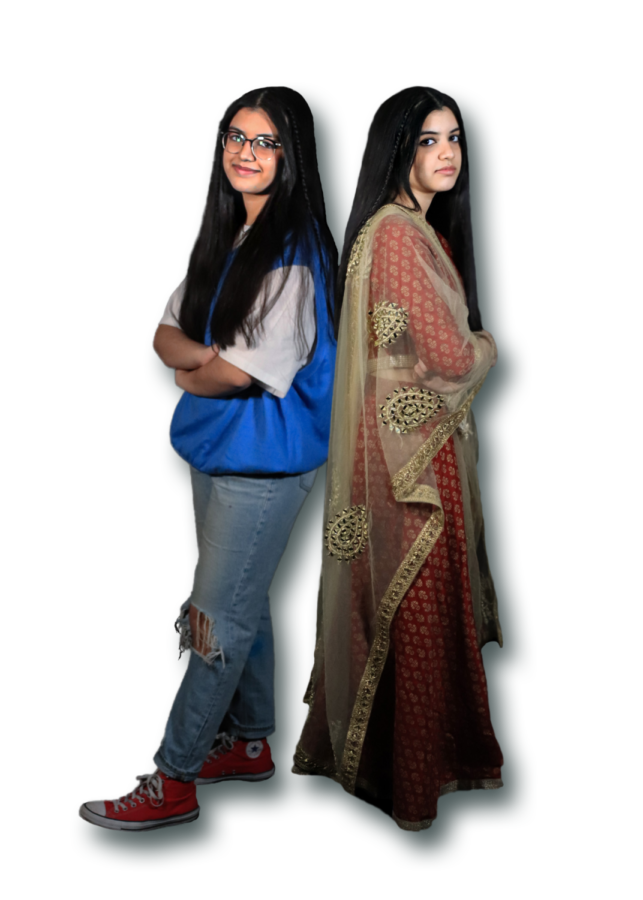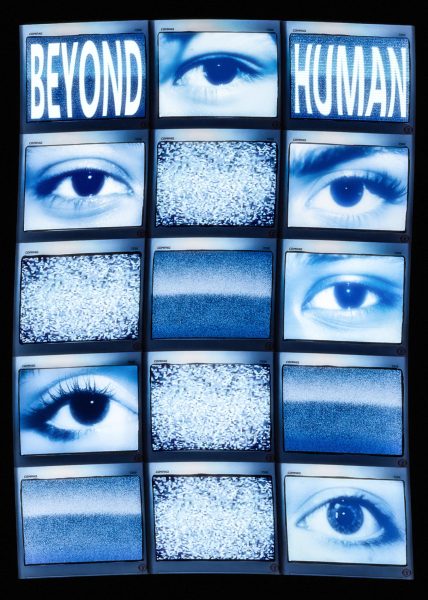Adjusting Our Image
A journey of navigating stereotypes as an Indian American woman.
May 6, 2021
“I have learned not to try and change myself to spite others. What is important to me as a girl is to stand up for women’s issues and against misogyny at every level. This means standing up for women who are criticized for being too “girly” and women criticized for not being “girly” enough.”
— Swarna Pashine
It’s something that creeps up on her, really. It’s always been there, the stereotypes, judgmental glances, the pressure to be different. To look different.
It’s everywhere.
Dolls at the store always look the same: pale skin, straight hair, giving some little girls confidence in their appearances. For others, it’s almost like a statement: beauty fits into one category.
And she doesn’t fit.
She sees it in the media, when the only characters that look like her are unrelatable, made to fit an agenda that isn’t truly meant to represent.
She sees the way people look down on her culture.
The microaggressions and racism that are never truly discussed or seen as negative.
She hears it when people disrespectfully mock with an accent, or make jokes that no matter how many times they say it’s all in good humor, is never funny.
After all, people are happy to ignore problems that don’t concern them.
But senior Swarna Pashine decided that she wanted to prove them wrong.
Opposing the norm
The entirety of middle school and the beginning of high school was miserable.
Classmates made disparaging comments, telling her that she smelled, or that the hairs on her arms were too noticeable. She spent lunch concealing her food from her peers. More than once she would quickly eat lunch in the solitude of the school bathrooms, just so she didn’t have to eat it in the open.
She wanted to be the opposite of the stereotypical Indian-American girl.
It was a stereotype to be skilled at tennis. She made sure to participate in different sports.
It was a stereotype to be smart, to do well on every subject at school. She purposely worked to give off the opposite image.
It was a stereotype to be quiet. She tried to be loud.
“I hated being stereotyped,” Pashine said. “It makes you lose your sense of individuality. It’s like all my personality traits and experiences and talents are taken away.”
Beauty in the eyes of society
It changed how she viewed herself physically, too.
“I have never even considered that someone who is not South Asian would find me attractive,” Pashine said. “It made me feel undesirable.”
For most of her life, she unconsciously tried to conform to the beauty standard.
Multiple times a week she would stand in front of her mirror to straighten her hair to fit in with the ‘desired’ image of naturally sleek and thin hair. She later finds herself in front of that same mirror, noticing the heat damage that it caused.
But the beauty standard went beyond that. Even if there was representation in the media, it still catered to a different audience.
“I rarely [would] see brown women with thick hair and thick eyebrows,” Pashine said. “Usually they are light-skinned and the ‘ideal’ person of color in white people’s eyes.”
She, like many others, recognizes how little representation seems to slip through the prejudiced cracks in the walls of society. Walls of society that were built by years of ideals on what an American woman should and shouldn’t be.
“I’ve just always been, I guess that is how it is, and haven’t thought twice about it,” Pashine said. “I never thought about how awful and strange that concept was until now.”
Finding herself
Slowly, things began to change.
She made more friends who she could relate to, who understood and acknowledged her experiences. Friends who attended cultural events and holidays along with her, friends who she could identify with.
Pashine, despite the world constantly telling her who she should or shouldn’t be, redefined what it meant to be an Indian-American woman for herself.
Two years ago, Pashine hosted her sweet sixteen — a massive event with upwards of a hundred people. Bollywood music blared, people cheerily danced to the tune of “Mauja Hi Mauja.” Pashine watched the scene with joy in her heart. She saw friends who had just been introduced to her culture, enjoying themselves and happy to learn, to participate. No longer was she the girl that hesitated to be anything other than the idealized American teenager.
When she finally cut the cake and ate dinner, which consisted of naan, butter chicken and biryani, Pashine didn’t have to hide.







